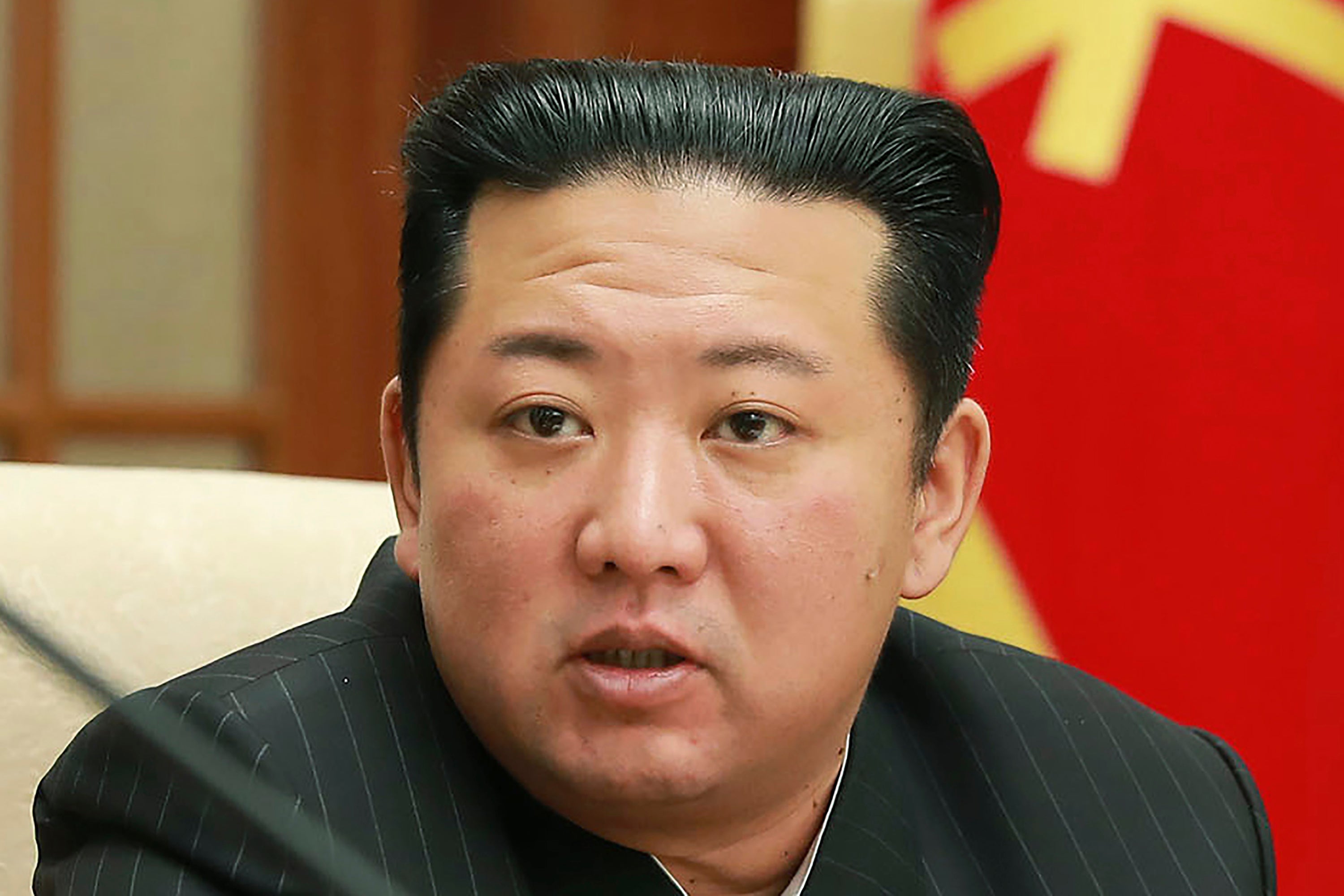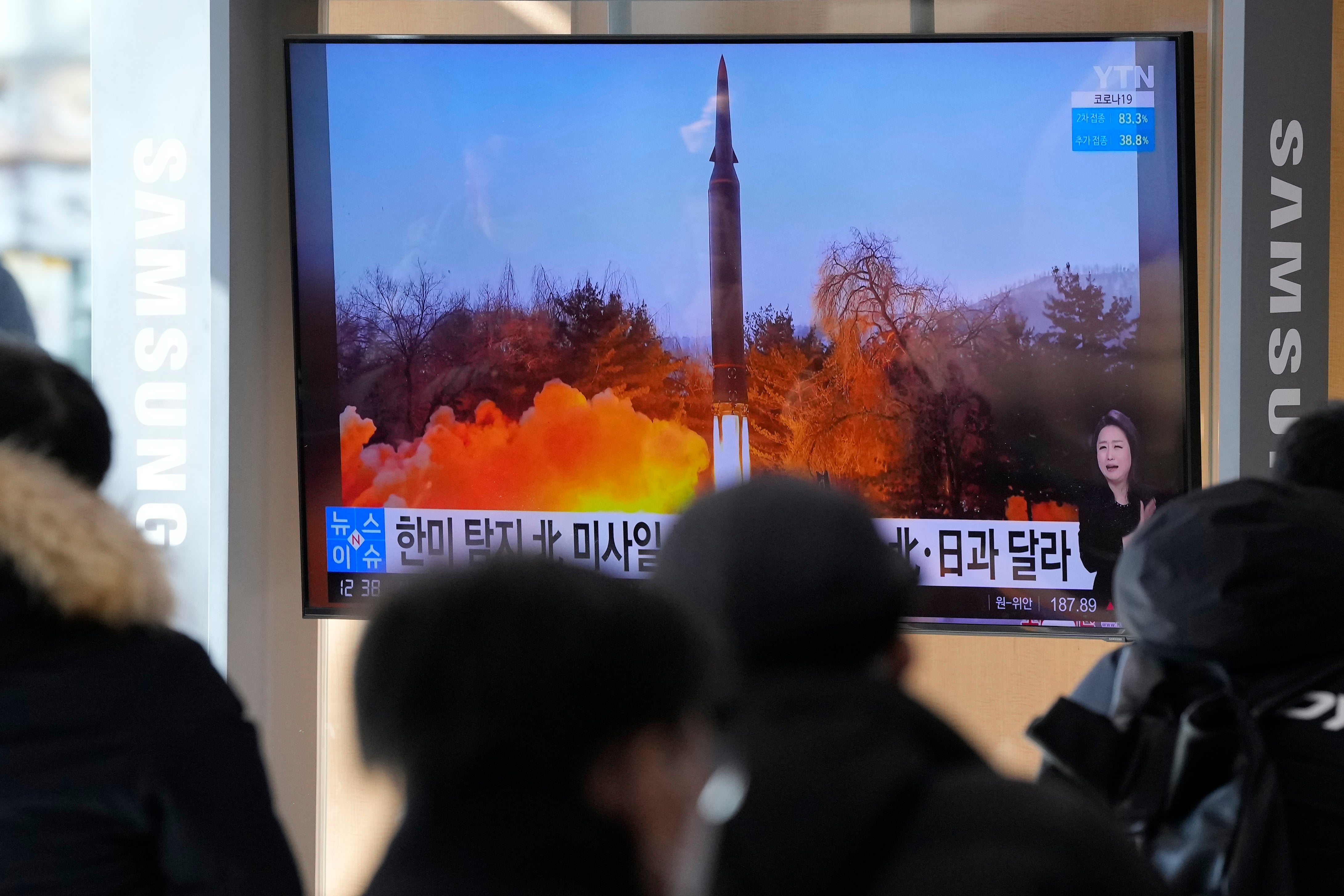North Korea conducts largest missile test since 2017
‘I think this means that the North’s moratorium (on long-range testing) is effectively over’

Nuclear-armed North Korea conducted its largest missile test since 2017 on Sunday.
The test is indicative of the North’s intentions to completely scrap a self-imposed 2018 moratorium on testing intercontinental range ballistic missiles (ICBMs), according to South Korean president Moon Jae-in.
South Korea’s National Security Council convened a rare emergency meeting presided over by the South Korean president after reports emerged of the test.
The test involved an intermediate-range ballistic missile (IRBM), according to South Korean officials, that typically have a flight range between 960km and 5,600km. ICBMs have ranges that exceed 5,600km.
The Hwasong-12 is one such IRBM that the North had tested in 2017.
Japan’s chief cabinet secretary Hirokazu Matsuno said the missile reached an altitude of around 2,000km and flew for 30 minutes to a distance of 800km.
South Korea’s Joint Chiefs of Staff said the projectile – believed to be a single ballistic missile – was launched about 7:52am (2252 GMT) from North Korea’s Jagang province off its east coast.
The flight details suggested this was the North’s first longest-range ballistic missile test since 2017, when it had flight tested three ICBMs that demonstrated a potential range that could reach deep into US territory.
The US Indo Pacific Command condemned North Korea’s testing activity on Sunday and urged the country to refrain from further destabilising acts, adding that the launch was not an “immediate threat” to the US.
Missile expert and research fellow Lee Choon Geun said the North’s moratorium was “effectively over”.
“I think this means that the North’s moratorium (on long-range testing) is effectively over,” he said.
The launch came more than a week after North Korean leader Kim Jong-un chaired a ruling party meeting on 20 January where senior party leaders threatened to resume the testing of nuclear explosives and ICBMs, which Mr Kim had suspended in 2018 while initiating diplomacy with the US.
The meeting took place after the US imposed fresh sanctions in the wake of four ballistic missile tests carried out by North Korea this month.
North Korea has been ramping up its testing activity, including seven rounds of weapons launches this month.
George William Herbert, an adjunct professor at the Centre for Non-proliferation Studies and a missile consultant, however, said the Sunday test was “clearly not the same as the prior tests”.
Mr Moon noted that this flurry of missile tests was reminiscent of heightened tension in 2017, when Mr Kim had ordered multiple nuclear tests and launched its largest missiles – including some that flew over Japan.

Leif-Eric Easley, a professor of international studies at Ewha University in Seoul, said the purpose of the tests appeared to be three-fold, including modernising North Korea’s military, bolstering national pride ahead of several major holidays and sending a message of strength amid severe economic crises over sanctions and Covid lockdowns.
“The Kim regime hears external discussions of its domestic weaknesses and sees South Korea’s growing strength,” he said. “So it wants to remind Washington and Seoul that trying to topple it would be too costly.”
Experts said the North could halt its testing spree after the start of the Beijing Winter Olympics next week out of respect for China, the country’s primary political and economic ally.
However, there’s also expectation that Kim could turn the heat up again once the Olympics end in February, to grab the attention of the Biden administration, currently focused on confronting China and Russia over its conflict with Ukraine.
According to analysts, Kim’s pressure campaign is aimed at forcing Washington to recognise the North as a nuclear power and convert their nuclear disarmament-for-aid diplomacy into negotiations for mutual arms-reduction.
Additional reporting by agencies
Join our commenting forum
Join thought-provoking conversations, follow other Independent readers and see their replies
Comments
Bookmark popover
Removed from bookmarks